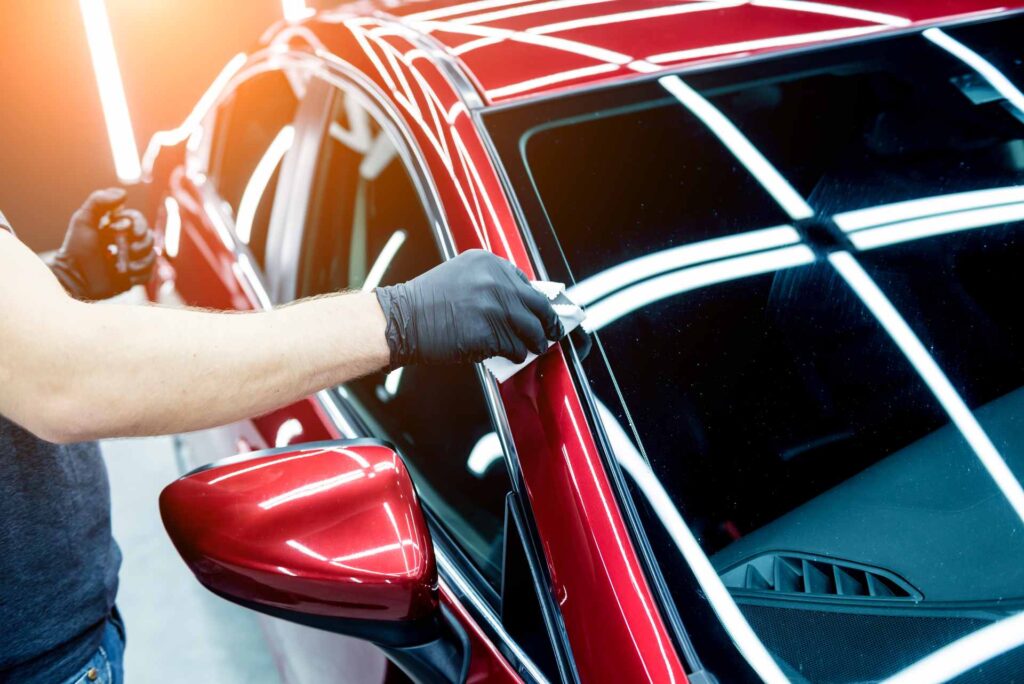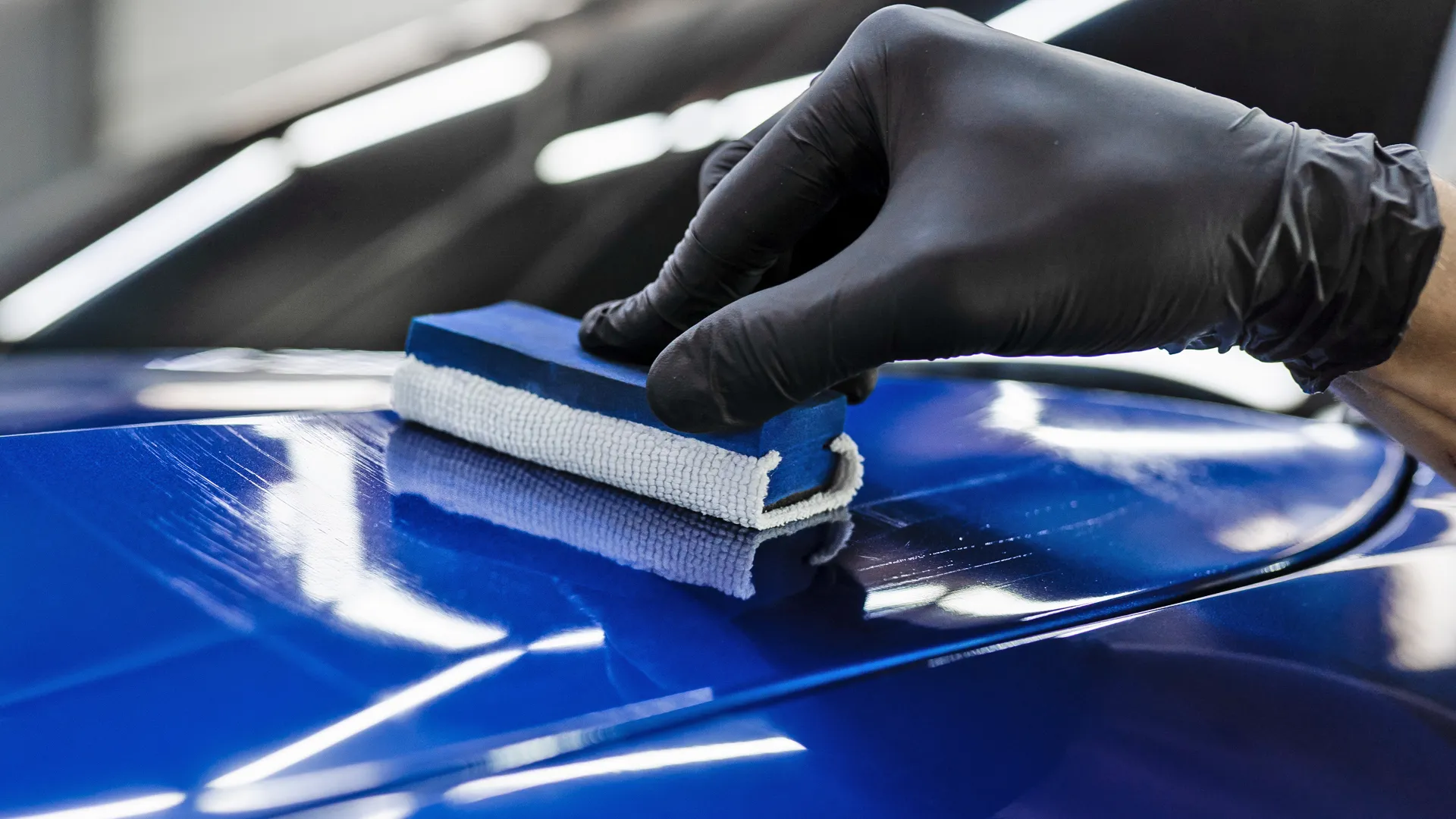Ceramic Coating: The Latest Solution for Protecting Your Car’s Paint from Extreme Elements
Ceramic Coating: The Latest Solution for Protecting Your Car’s Paint from Extreme Elements
Blog Article
Why Ceramic Coating Is the Ultimate Option for Car Paint Security
In the realm of auto treatment, ceramic coating has actually emerged as an exceptional option for paint defense, using a level of resilience and durability that conventional methods can not match. As we discover the complex benefits and one-of-a-kind residential properties of ceramic finishings, it becomes obvious why discerning cars and truck proprietors are progressively turning to this innovative innovation for protecting their financial investments.
Benefits of Ceramic Coating
Ceramic coating offers various benefits for car paint security, making it a preferred option among auto lovers and specialists alike. One of the most significant advantages is its exceptional longevity. Unlike conventional waxes and sealants, ceramic finishings create a strong, resilient bond with the vehicle's surface area, using defense that can last for years with appropriate upkeep.
Another key advantage is the hydrophobic homes of ceramic coatings, which ward off water and impurities. This suggests that dirt, gunk, and various other toxic wastes are less likely to abide by the surface area, resulting in less complicated cleansing and reduced maintenance time. Furthermore, the shiny surface supplied by ceramic coatings enhances the vehicle's look, preserving its showroom luster.
Additionally, ceramic finishes offer UV protection, safeguarding the paint from hazardous sun rays that can trigger fading and oxidation with time. They additionally give a level of scratch resistance, helping to decrease the event of small abrasions. On the whole, the financial investment in ceramic coating not only preserves the visual allure of the lorry however likewise enhances its longevity, making it an optimal solution for car paint security.
Exactly How Ceramic Coating Works
Understanding how ceramic coating jobs is basic to valuing its safety capabilities. Ceramic finishings are made up of innovative nanotechnology that produces a resilient, hydrophobic layer externally of a car's paint. This layer is largely made up of silica dioxide (SiO2), which bonds chemically with the paint, developing a solid, safety barrier that boosts the surface area's durability.
When used, the coating fills in microscopic blemishes in the paint, resulting in a smooth, glossy finish that not just enhances the automobile's appearance but additionally provides an awesome protection against ecological pollutants. This includes UV rays, bird droppings, tree sap, and other damaging compounds that can break down paint quality.
The hydrophobic properties of ceramic coatings trigger water to bead and roll off the surface, bring dust and particles with it. Inevitably, recognizing these systems highlights why ceramic coating is concerned as an unequaled option for cars and truck paint defense. ceramic coating.

Contrasting Ceramic Coating to Wax
When examining paint defense alternatives, lots of cars and truck proprietors usually discover themselves torn between the enduring allure of traditional wax and the modern-day advancement of ceramic coating. Wax has actually long been the go-to option for vehicle lovers because of its all-natural composition, convenience of application, and glossy surface. It provides a temporary shield versus environmental contaminants, UV rays, and dampness, generally lasting a couple of weeks to a few months before needing reapplication.
In comparison, ceramic coating offers an advanced option, utilizing nanotechnology to create a sturdy, hydrophobic layer on the automobile's surface area. This layer bonds chemically with the paint, giving a formidable obstacle versus scrapes, oxidation, and harmful contaminants. Unlike wax, which can check this diminish in performance gradually, ceramic finishes are created to endure harsh conditions and maintain their safety buildings for an extended period.

Long-Term Defense and Durability
The longevity of paint security is a crucial factor for lots of lorry proprietors, specifically those that desire to protect their auto's look gradually. Ceramic coating supplies significant benefits hereof, supplying a durable guard against numerous ecological threats. Unlike standard wax or sealers that may last just a couple of months, ceramic layers can withstand for several years, typically approximately a decade, depending on the item and application.
The chemical framework of ceramic coverings creates a strong bond with the automobile's paint, developing a hydrophobic layer that pushes back water, dirt, and pollutants. This not only improves the car's aesthetic charm however likewise reduces the need for constant washing, thus minimizing potential damage from unpleasant cleaning methods. Additionally, ceramic layers are resistant to UV rays, which assists prevent oxidation and fading of the paint, making certain that the vehicle maintains its vibrant color over the long term.
Additionally, the resilience of ceramic coverings means they are much less most likely to chip, crack, or peel contrasted to browse around here alternate options. This durable security contributes to higher resale worth, making ceramic finishings an investment in both appeal and long life for any lorry owner.
Maintenance Tips for Porcelain Coated Cars
Proper maintenance of a ceramic covered car is necessary to make sure the durability and performance of the safety layer. Regular washing is important; it is suggested to utilize a pH-neutral automobile shampoo to stay clear of weakening the coating. Cleaning must be done every two weeks or more regularly, depending upon environmental conditions.

Additionally, using a ceramic coating maintenance spray can improve hydrophobic homes and include added security (ceramic coating). This should be done every few months for ideal results
Inspect the coating regularly for indications of wear or damage. If water no much longer beads externally, it may be time for Read More Here a refresh or additional application.
Final Thought
In final thought, ceramic coating represents a premium option for automobile paint security due to its unparalleled sturdiness and long-lasting bond with vehicle surfaces. Contrasted to traditional wax, ceramic finishes use expanded protection with very little maintenance requirements.
Ceramic coating uses many advantages for automobile paint defense, making it a recommended selection among automotive fanatics and specialists alike. On the whole, the investment in ceramic coating not only preserves the aesthetic appeal of the lorry but also boosts its durability, making it an optimal solution for automobile paint protection.
Inevitably, comprehending these devices highlights why ceramic coating is concerned as an unmatched solution for vehicle paint protection. ceramic coating.
When assessing paint security options, numerous vehicle owners commonly find themselves torn in between the long-lasting allure of traditional wax and the contemporary innovation of ceramic coating.In conclusion, ceramic coating represents a remarkable option for car paint protection due to its unequaled resilience and resilient bond with car surface areas.
Report this page